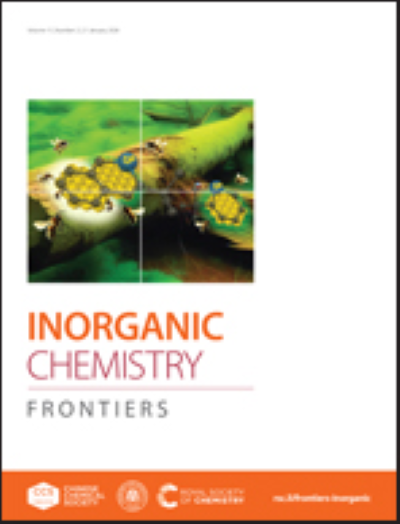通过双过氧化物荧光粉中的中间状态增强上转换发光:利用 python-assisted 验证的三模式光学测温仪
IF 6.1
1区 化学
Q1 CHEMISTRY, INORGANIC & NUCLEAR
引用次数: 0
摘要
高发光强度、多模式和高灵敏度是实现微电子器件和生物系统光学测温高精度的关键。双钙钛矿荧光粉Ca2Sc0.63Mg0.07SbO6:Yb3+,Er3+被证明有希望克服这些挑战。采用简单的高温固相法制备该样品,在980 nm激发下表现出红色的反斯托克斯发光。Mg2+取代Sc3+导致晶格收缩和氧空位含量增加。氧空位诱导中间态的生成明显增加。这就增强了上转换的发光强度。Ca2Sc0.63Mg0.07SbO6:Yb3+,Er3+荧光粉能够通过热耦合能态(TCES)、非热耦合能态(NTCES)和CIE色度位移进行三模光学测温。基于ntces的模式具有显著的相对灵敏度Sr-max = 4.8% K-1和优越的信号分辨率δT = 0.016 K。此外,基于ntces的模型进行了实际应用测试,通过Python辅助进行了大约10万次评估,预测的理论温度与实际测试温度的差值保持在6 K以内。本文章由计算机程序翻译,如有差异,请以英文原文为准。
Enhancing upconversion luminescence via intermediate state in double perovskite phosphor: three-mode optical thermometry with python-assisted validation
High luminescence intensity, multiple modes, and high sensitivity are critical to achieving high measurement accuracy for optical thermometry in microelectronic devices and biological systems. The double perovskite phosphor, Ca2Sc0.63Mg0.07SbO6:Yb3+,Er3+, proves to be promising in overcoming these challenges. A simple high-temperature solid-phase method was used to prepare this sample which was found to exhibit red anti-Stokes luminescence under 980 nm excitation. Heterovalent substitution of Mg2+ for Sc3+ leads to lattice shrinkage and oxygen vacancy content enhancement. The induced generation of the intermediate state by the oxygen vacancy is significantly increased. This consequently enhances the upconversion luminescence intensity. The Ca2Sc0.63Mg0.07SbO6:Yb3+,Er3+ phosphor is capable of three-mode optical thermometry by thermally coupled energy states (TCES), non-thermally coupled energy states (NTCES), and CIE chromaticity shift. The NTCES-based mode has a notable relative sensitivity of Sr-max = 4.8% K-1 and superior signal resolution δT = 0.016 K. Furthermore, the NTCES-based model was tested for practical applications, and the difference between the predicted theoretical temperature and the actual test temperature was kept within 6 K after about 100,000 evaluations via Python assistance.
求助全文
通过发布文献求助,成功后即可免费获取论文全文。
去求助
来源期刊

Inorganic Chemistry Frontiers
CHEMISTRY, INORGANIC & NUCLEAR-
CiteScore
10.40
自引率
7.10%
发文量
587
审稿时长
1.2 months
期刊介绍:
The international, high quality journal for interdisciplinary research between inorganic chemistry and related subjects
 求助内容:
求助内容: 应助结果提醒方式:
应助结果提醒方式:


